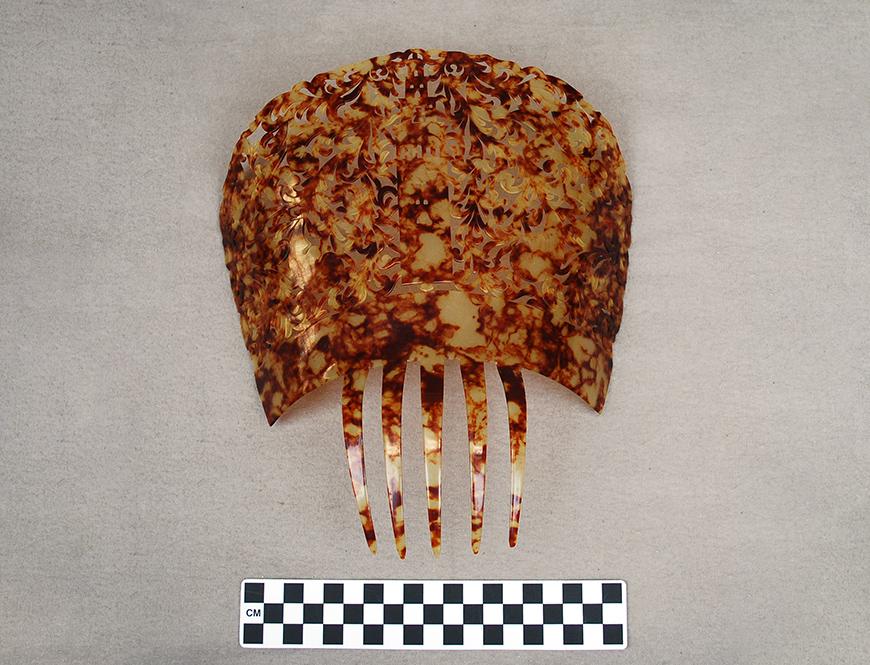This comb was donated by a descendant of Dr. Aureliano Urratia, who was an exile from Mexico during the 1910 Mexican Revolution. Before the revolution, Mexico was led by Porfirio Diaz. Diaz and his government was essentially a dictatorship, running Mexico from 1876 to 1911. During his years in power, Diaz achieved a level of political stability and economic development that had yet to have been seen. This fast development caused many changes in Mexico, some of these changes would eventually lead to the revolution.
One of the avenues for economic development was commercial agriculture. Mexican and foreign entrepreneurs expanded their land holdings and focused their efforts on raising cash crops such as sugar, henequen, and cotton. However, this would lead to problems with smaller villages and peasants. These massive estates controlled all the farm lands in rural Mexico. Prior to the growth of commercial agriculture, some of the land had been rented out to the local villagers and peasants to use for food and grain production, but now the landlords devoted all their lands to cash crops which were more profitable than renting the land. Without access to land, rural villages and peasants struggled to get food to support themselves. The size of these estates and the amount of land taken was so great, that a quarter of the land in Mexico was held by only 834 people.
The takeover of vast amounts of peasant and village land was not the only reason for the revolution, but it was a major one. As Diaz’s reign continued, many started to become frustrated with the regime. Early in the 1900s, the Partido Liberal Mexicano (PLM) was formed which called for a four year presidential term, minimum wage, eight hour workday, and an end to child labor.
The call for a four-year presidential term limit shows the frustration that was being felt by many. In the 1910 election, Francisco Madero would choose to run against Diaz. Diaz would go on to arrest Madero, and this would spark the revolution. In the early days, Madero would escape the reach of Diaz by hiding in many towns in the southern United States, including San Antonio. But despite not being in the country, many rose up and lead forces in his name, or in the name of revolution.
Many of those who rebelled against the government were poorer agricultural workers. This can be seen in the makeup of revolutionary leader Pascual Orozco’s men, who were primarily ranchers, peasant farmers, shepherds, or muleteers. This shows the resentment that the poorer agricultural workers had for the commercial farming program.
This revolution would take years and much bloodshed to reach its conclusion. In 1920 Alvaro Obregon would become president after ten years of conflict. With the signing of the Constitution of 1917, laws were put into place that addressed the issues that groups like the PLM were most concerned about. The constitution gave peasants the right to their land, a minimum wage, right to education, and more. The Revolution of 1910 in Mexico was very important in making the country we know today.
